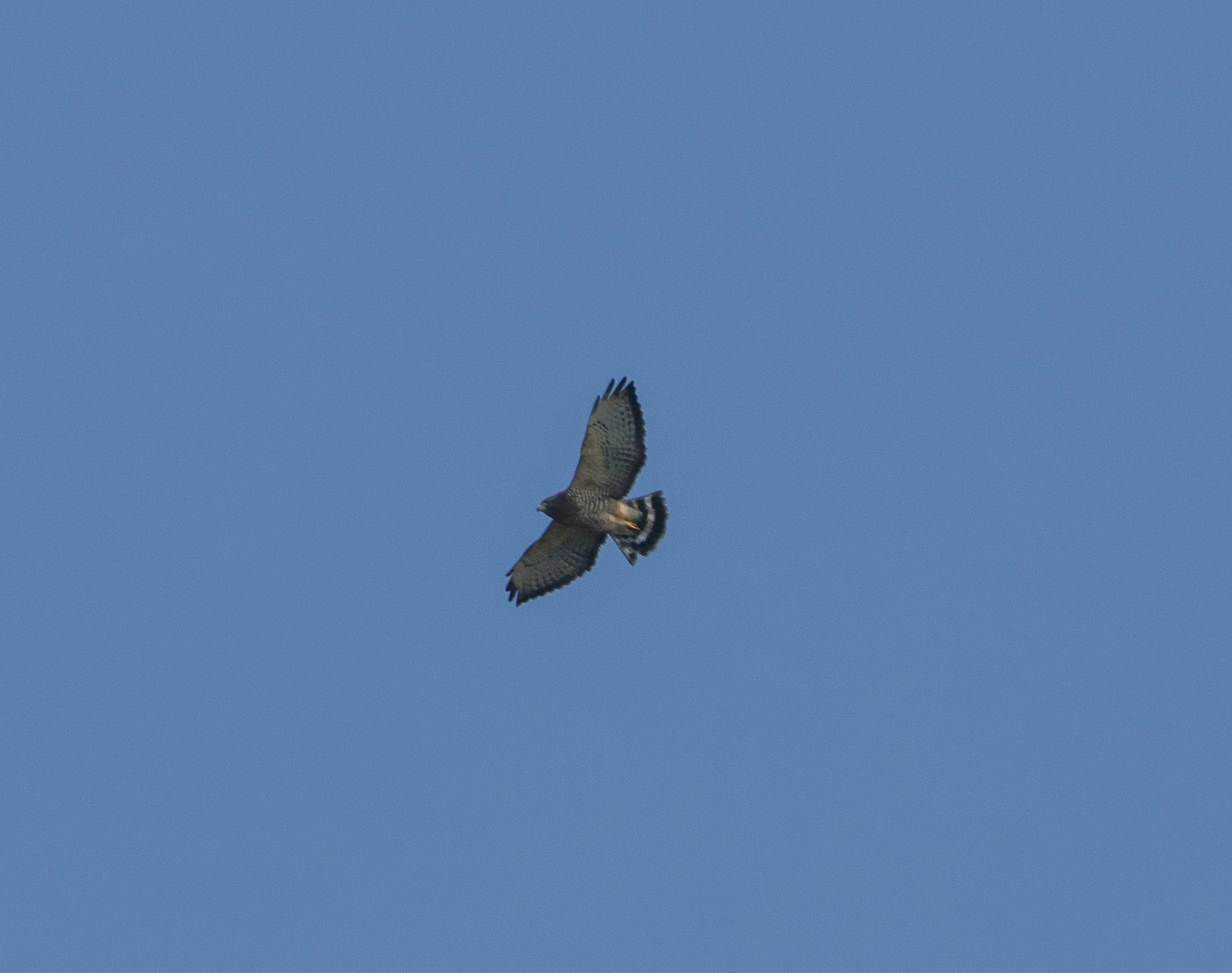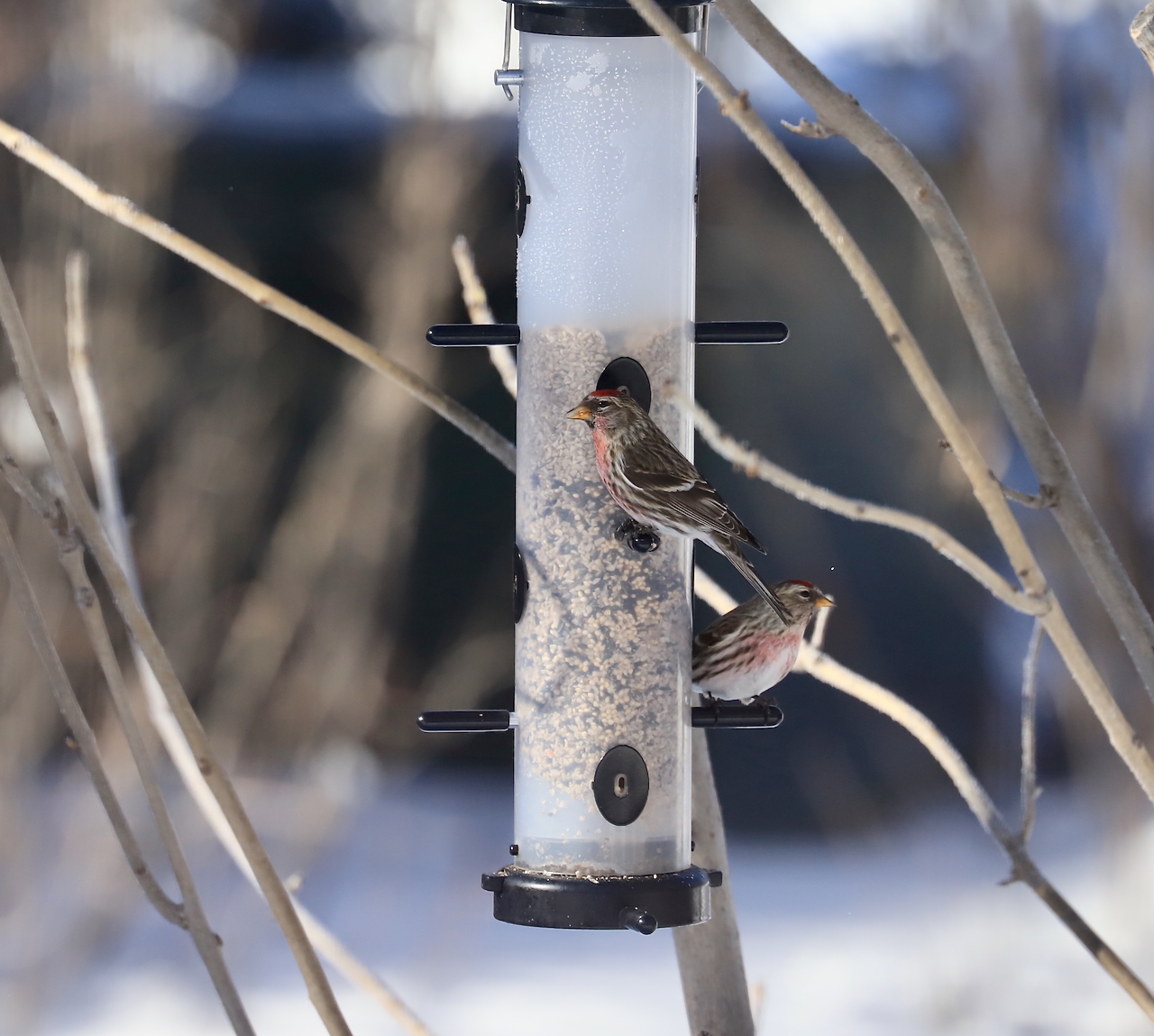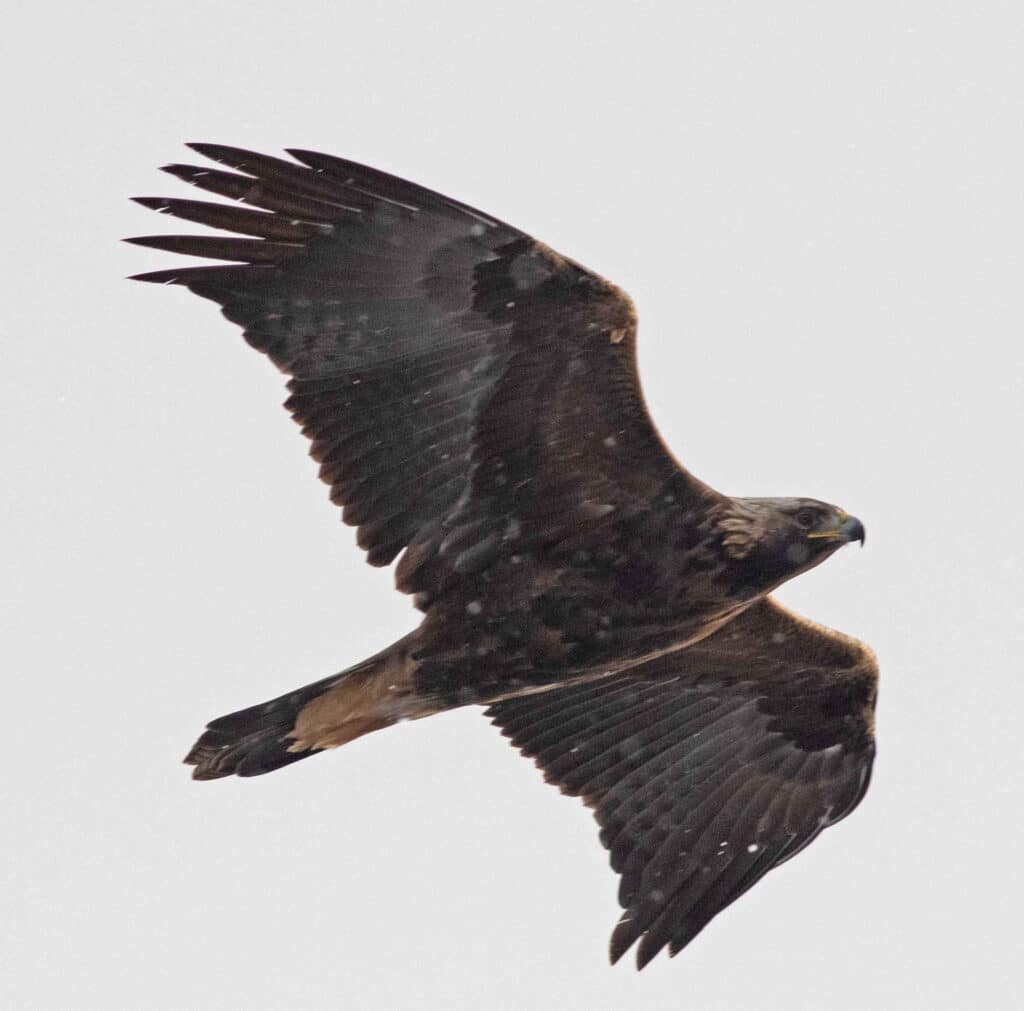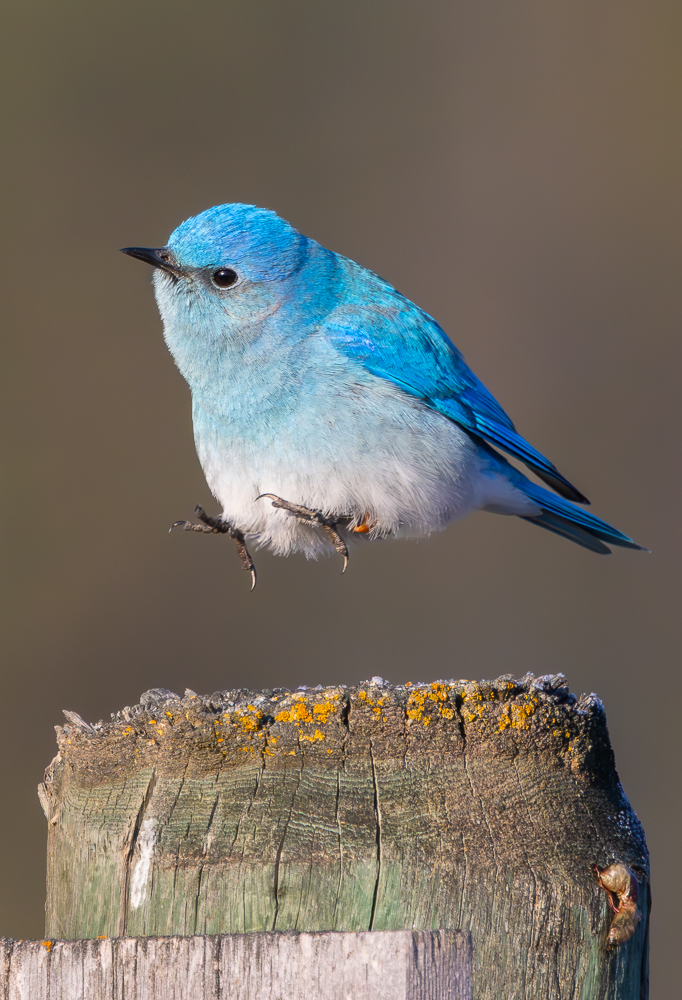2024 Bridger Raptor Migration Project Update:
Raptor counts thus far are showing strong numbers!
by Steve Hoffman
We are now in the midst of our 33rd consecutive full-season of scientific counts of migrating birds of prey, and we are excited to provide everyone a brief update on the 2024 count results thus far. Every year these counts begin on 27 August and conclude on 31 October. This long-term raptor population monitoring project is a partnership between Sacajawea Audubon Society and HawkWatch International. The chief goal of this important work is to assess long-term trends of 17 raptor species that use the Bridger Ridge to migrate from their breeding grounds located in the Pacific Northwest, western Canada and Alaska, to spend the non-breeding period in a warmer climate where prey is readily available.

The first 21 days of our migrant raptor counts atop Bridger Bowl Ski Area are now complete (through September 16th). Our three dedicated volunteer observers – Alicia Wilson, Adam Brown & Rosemary D’Andrea – are doing a fabulous job for us, diligently detecting, identifying and recording all migrating raptors from 10am to 6pm daily. We are most grateful for their outstanding work and valuable expertise!
We are pleased to report that the numbers for many raptor species are showing a very strong start!! The only glitch thus far has been a few days of poor air quality from the 7th-11th of September due to a large number of wildfires throughout western Montana & Idaho. Fortunately, a strong storm on September 12th brought substantial rainfall, dissipating the heavy smoke and greatly reducing the wildfire danger throughout the region.
The total count now stands at 945 migrant raptors of 16 species. Impressive numbers of Cooper’s Hawks (250), Sharp-shinned Hawks (150), Red-tailed Hawks (89), American Kestrels (81), and especially Broad-winged Hawks (179) have been tallied so far, suggesting that these species had a successful 2024 breeding season. The Broad-winged Hawk count is particularly remarkable, since our highest full-season count in the 33-year history of the project has been 81 individuals recorded in 2023.
At this point we have no idea what could be causing this dramatic increase. The Broad-winged Hawk is primarily a species that inhabits the closed-canopy forests of eastern North America. However, a thin portion of its nesting range extends into northern Alberta and possibly northeastern British Columbia. Interestingly, this species typically spends the winter in South America. On September 15th, 110 Broad-winged Hawks were counted migrating south along Bridger Ridge, a truly amazing one-day tally for this species! The winds were from the East all day, likely a prominent factor that may have contributed to the greater numbers of these birds that day. (Typically, winds atop the Bridgers blow from the West.) Due to climate changes affecting the behavior of the jet stream, we are now beginning to see a greater frequency of easterly winds atop the Bridgers, which may result in higher counts of Broad-winged Hawks at our observation site. We shall see if this trend continues!
We sincerely thank Sacajawea Audubon Society members for their continued sponsorship and generous annual financial support for the Bridger Raptor Migration Project. We wish to express our deepest appreciation for the additional critical, generous financial support for the 2024 Bridger raptor count from Bill Simkins & Erna Smeets, Montana Audubon, Upper Missouri Breaks Aububon Society, Gallatin National Forest, Elizabeth Wakeman Henderson Charitable Foundation, GCC Trident Cement, Lila Bishop, Nick Bolgiano, Gina Carolan, Lou Ann Harris, Scotty & Carolyn Heppel, Terri Narotzky, Elizabeth Swanson, and many others! We greatly appreciate local volunteer observers Paulette Epple, Beth Madden, John Parker and several others.
Raptor Viewing Tips for the Bridgers
The best overall raptor viewing for a variety of migrant raptors atop the Bridgers is from mid-September through mid-October. The general public is invited to join Adam, Alicia and Rosemary to witness one of nature’s most spectacular phenomena as these majestic birds migrate south over the Bridgers!
Additional volunteer observers are always needed to help conduct these counts. For those in good physical condition, it is a 1.5-2 hour hike to the observation point (2,000-ft. elevation gain). Anyone wishing to volunteer please contact Project Coordinator Steve Hoffman at swhoffman0322@gmail.com or call 406-461-5714. Folks are welcome to visit hawkcount.org or sacajaweaaudubon.org to obtain daily count totals. We look forward to seeing many of you at the Bridger Lookout this season.
Follow the observations of the Bridger Counters on the Bridger Raptor Blog at https://sacajaweaaudubon.org/bridger-raptor-count-blog/





